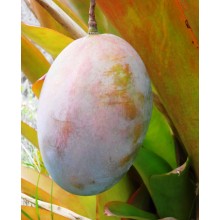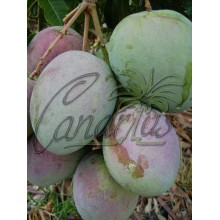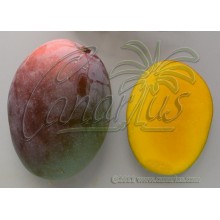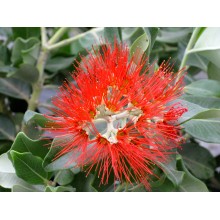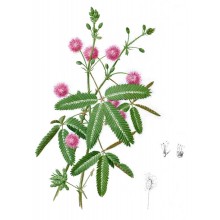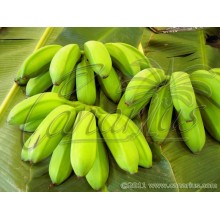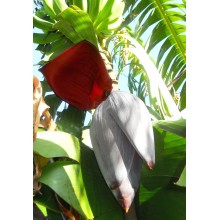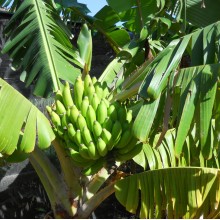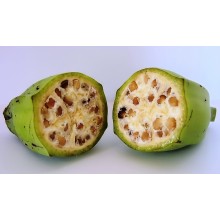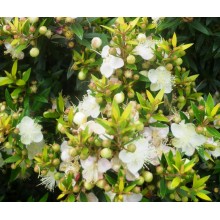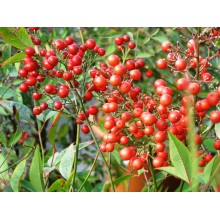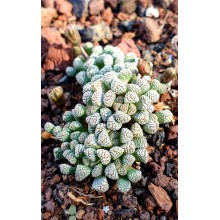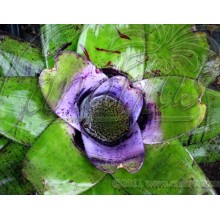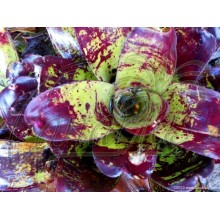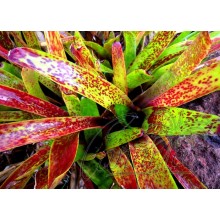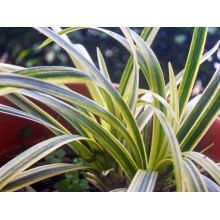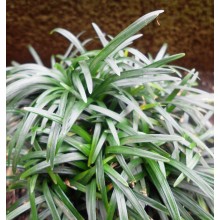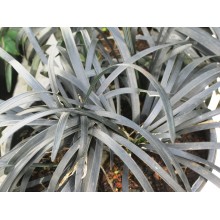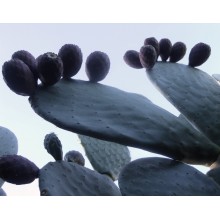Plantas resistentes al Frío Hay 317 productos.

Esta es nuestra selección de plantas que pueden soportar algo de frío. Algunas sólo resistirán un clima frío y un poco de escarcha, pero otras aguantarán fuertes heladas en climas más fríos. Todas son muy diferentes, pero merecen ser probadas, porque todas estas plantas de aspecto tropical tienen requisitos no tropicales. Seguramente prosperarán al aire libre en climas mediterráneos costeros, o en un invernadero mínimamente climatizado donde no se cree escarcha.
-
Mangifera indica 'Keitt'
Mangifera indica 'Keitt'
Dwarf mango tree with huge purple-green juicy fruits of about 1 kg each. One of the most colourful of all. Bears late in season. Not really cold hardy, but being "dwarf" it can be easily protected in winter, grown in a greenhouse or trained on a wall.
52,30 € -
Mangifera indica 'Lippens'
Mangifera indica 'Lippens'
Fruits of Mango "Lippens" are medium sized but short in length. The skin is yellow-pink and the yellow flesh is soft with low presence of fibres. Ripens in mid season. The tree is small-sized and is recommended for cooler locations.
52,30 € -
Mangifera indica 'Osteen'
Mangifera indica 'Osteen'
Osteen is an average sized tree, very good in Mediterranean climates and so it is the leading mango cultivar in commercial orchards of Southern Spain. Purple skinned fruit, typically with a blue wax. Yellow, fibre-less flesh, small seed. Weight is 300-700
52,30 € -
Metrosideros collina cv. Spring Fire
Metrosideros collina cv. Spring Fire
Spectacular crimson-stamened pincushion or pom-pom type flowers adorn the plant through spring and summer.
38,00 € -
Mimosa pudica - Sensitive Plant
Mimosa pudica - Sensitive Plant
This species rocks! It is a creeping plant, with sensitive leaves that respond to touch, heat or wind. When you touch the leaves they quickly close for a few minutes. It is from tropical America and it loves a lot of sun and heat.
17,20 € -
Musa 'Dwarf Orinoco', 'Dwarf Topocho'
Musa 'Dwarf Orinoco', 'Dwarf Topocho'
This is a much shorter clone of the famous banana named Orinoco, Topocho or Bluggoe. Tolerant of wind, drought and cold. Fruits are very different from the common bananas from the supermarket, triangular or square in section - they can be eaten cooked or raw!
41,50 € -
Musa 'Orinoco', 'Topocho' - Banana Tree
Musa 'Orinoco', 'Topocho' - Banana Tree
This is the famous banana named Orinoco, Topocho or Bluggoe. Tolerant of wind, drought and cold. Fruits are very different from the common bananas from the supermarket.
42,50 € -
Musa 'Rajapuri' - Dwarf Banana
Musa 'Rajapuri' - Dwarf Banana
Dwarf banana with small sweet fruits, similar to the "apple banana". It is native to the cool Punjabi Himalayas, and it easier and faster than most other types of bananas. It can grow from pup to fruit in much less than one year, so it does well in non-tropical countries with a short growing season.
59,50 € -
Musa balbisiana
Musa balbisiana
This is a wild banana with seed, the hardiest ancestor of most edible bananas. It is hardier to cold, wind and drought than most bananas. Fruits are edible but they are starchy and full of seeds. Fibres are strong and useful.
38,00 € -
Myrtus communis ssp. tarentina
Myrtus communis ssp. tarentina
Myrtus communis is a genus of flowering plants in the family Myrtaceae.
11,80 € -
Neohenricia sibbettii
Neohenricia sibbettii
One of the smallest and finest mesembs. Neohenricia resembles a miniature titanopsis with the typical warty leaf tips, but it creeps in sand and forms a carpet.
18,70 € -
Neoregelia concentrica Purple Center
Neoregelia concentrica Purple Center
This is the supreme clone selected from wild plants, released some years ago from Bullis Bromeliads, in the USA. Leaves are wider and the center of the rosette turns bright purple when blooming. It withstands light frost.
24,00 € -
Neoregelia concentrica Spotted
Neoregelia concentrica Spotted
Very wide and thick leaves, with unreal colours of greys, greens, browns and purples. It also develops the typical concentrical markings. One of the toughest "Neos" - it can survive to about -5 C (23 F)!
28,80 € -
Neoregelia maculata
Neoregelia maculata
A small bromeliad species with nice dark speckling on the top side and light banding on the undersides. Growth is upright tubular, with stiff, 20 cm (8") tall tube-like rosettes. Thrives outdoors in Mediterranean climates.
17,40 € -
Ophiopogon japonicus 'Shiroshima Ryu'
Ophiopogon japonicus 'Shiroshima Ryu'
Variegated selection of the Mondo Grass, with a silvery white variegation on a silvery green background.
18,20 € -
Opuntia ficus-indica cv. Red Spineless
Opuntia ficus-indica cv. Red Spineless
It is not truly spineless, but it has very few spines. It is a large, robust selection with red juicy fruits of good quality.
25,50 €
En estos momentos tenemos pocos productos en esta categoría Plantas resistentes al Frío
















